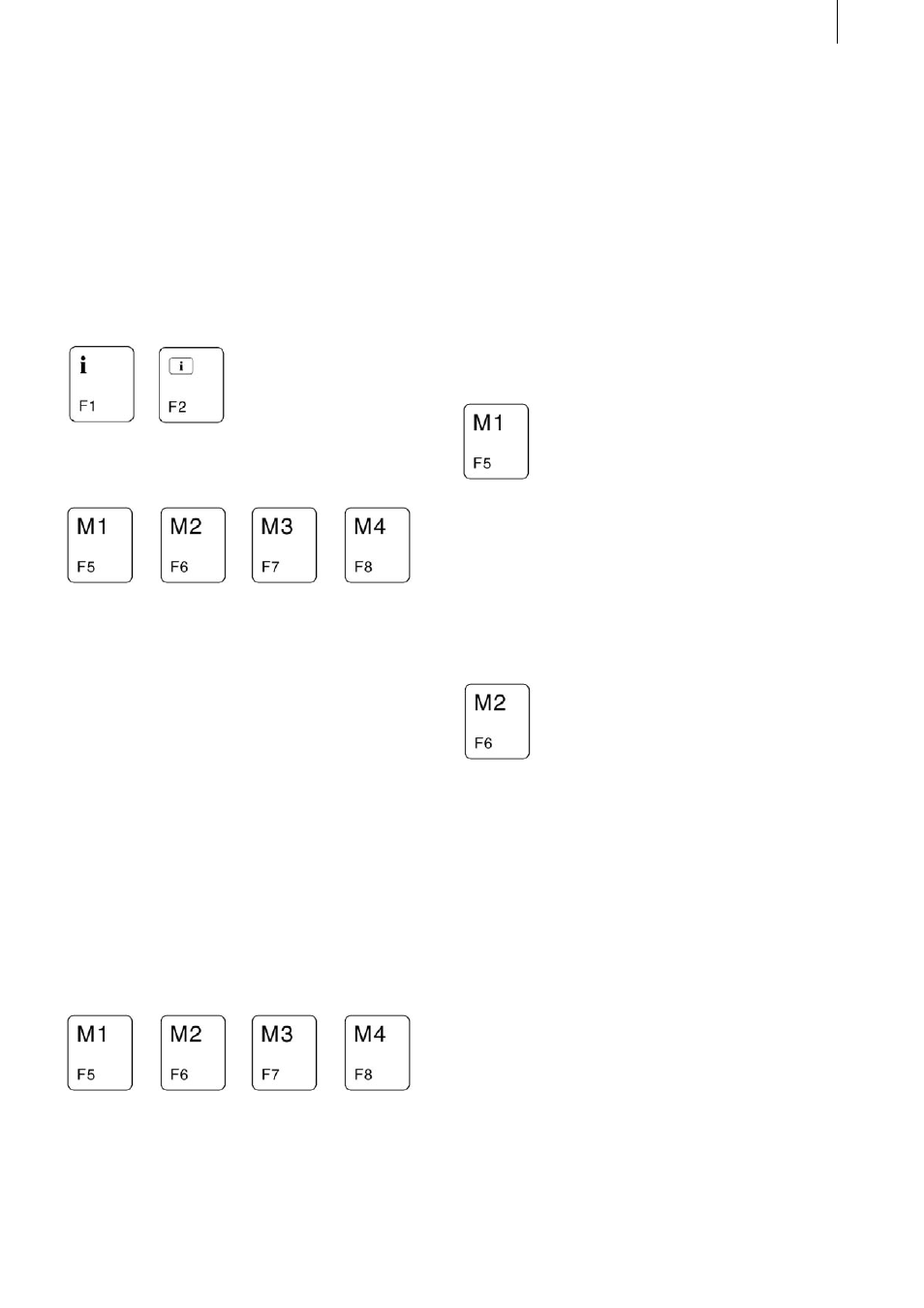Function keys – MacroSystem Power Key-Option User Manual
Page 15

14
15
4. Function keys
The Power Key Option has over 15 function keys.
If you have your own keyboard connected, ple-
ase take note of the differences between it and
the keyboard sold by MacroSystem. Please read
Chapter 1.2 entitled „Keyboards.“
The two function keys
provide help. You can assign your own functions
to the
keys. The
keys are used to control the record, stop, play and
pause functions for the storyboard and for the
Record and Finish screens.
The four marker keys that you can program
yourself relate to the functions in the storyboard
and can be used in all screens in which a story-
board is available.
Marker keys
The Power Key Option gives you the option of
assigning your own choice of functions to four
keys. The M1, M2, M3 and M4 keys („M“ stands
for marker) are used for this:
These keys are not assigned, which is why a circle
with a line through it appears on-screen if you
press one of the four keys. This symbol indicates
that a function cannot be carried out.
You can now assign functions to the keys as
required, e.g. effects that you use frequently,
particular positions in the storyboard, scenes
from the scene bin or patterns and masks in the
imagepool.
To do so, select the required effect from the list of
effects or the required scene and then press Ctrl
and the marker key that you want to assign. The
function you have chosen is now assigned to the
selected marker key.
Here is an example: Highlight a scene in the
scene bin, press the Ctrl key and, whilst keeping it
pressed, press the first marker key, i.e.
You can then select another scene anywhere
in the scene bin and, by pressing this key once
more, you can access your marked scene again.
To store an effect, proceed as follows: For examp-
le, in the list of effects in the Transitions screen,
select the „Double Exposure“ function. Press the
Ctrl key and, whilst keeping it pressed, press the
key and then let go of the two keys. Now scroll
further through the list of effects and then press
the marker key again. As you can see, the key
has now been assigned the „Double Exposure“
function.
You can of course assign several functions to a
key as long as these functions are not located in
the same screen. So, for instance, you can as-
sign a scene from the scene bin, a title effect, an
image-processing effect and a transition effect all
to one marker key - depending on which screen
you are in, you can then access the stored func-
tion by pressing the marker key.
You can, of course, reassign the marker keys
whenever you want. To do so, proceed as you did
when assigning a function for the first time. The
newly assigned function will „overwrite“ the old
function.
All four keys are stored in non-volatile memory,
